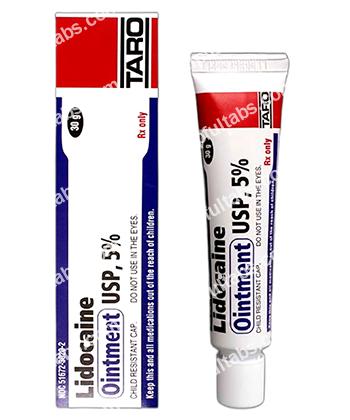There is no review for this product at the moment, but you can be the first to add or you can read more in Testimonials Page about related products.
Add Review
Your review is on premoderation.
Common Use
Xylocaine is a local anesthetic that works by blocking voltage-gated Na+ channels. This prevents the generation of impulses in sensory nerve endings and stops pain signals in nerve fibers. Its effects begin within 1-5 minutes after application to the skin or mucous membranes and typically last 30-60 minutes.
Xylocaine is used for:
- Topical anesthesia in dentistry, otorhinolaryngology, and gynecology
- Instrumental and endoscopic examinations
- Radiographic procedures
- Pain relief for burns, insect bites, contact dermatitis, and minor wounds
Dosage and Directions
Xylocaine gel is for topical use only. Apply a small amount to dry, clean skin as needed, 3-4 times daily.
Precautions
Use with caution in:
- Patients with hemorrhoidal bleeding
- Individuals with skin or mucous membrane trauma
- Elderly patients, children, and debilitated individuals
- Pregnant or breastfeeding women
Additional precautions:
- Avoid contact with eyes
- Be careful not to injure treated skin areas
- Avoid exposure to very hot or cold surfaces
Contraindications
Do not use Xylocaine if you have a known hypersensitivity to it or any of its components.
Possible Side Effects
Common adverse reactions may include:
- Allergic reactions (e.g., stinging, severe burning, skin sensitivity)
- Dizziness or drowsiness after application
- Swelling, redness, or unusual temperature sensations
- Bruising or purple skin discoloration
Serious side effects may include:
- Urethritis
- Headache or blurred vision
- Low blood pressure
- Bradycardia or arrhythmia
- Anxiety or agitation
Drug Interactions
The following drugs may interact with Xylocaine:
- Cimetidine and Propranolol: Increase Xylocaine blood levels, raising toxicity risk (may cause bradycardia, drowsiness, or stupor)
- Barbiturates, Phenytoin, Rifampin: Reduce Xylocaine effectiveness
- Antiarrhythmics (Aymalin, Amiodarone, Quinidine): May weaken heart contractions
- Beta-blockers: Increase bradycardia risk
- Procainamide: May lead to CNS excitation and hallucinations
- Sedatives/Hypnotics: Increase CNS depression
- MAO Inhibitors: May enhance anesthetic effects
Inform your doctor if you use:
- Mexiletine (Mexitil)
- Acetaminophen (Tylenol)
- Nitrates/Nitrites (Isordil, Monoket, Imdur)
- Phenobarbital (Solfoton, Luminal)
- Chloroquine (Aralen)
- Nitrofurantoin (Furadantin, Macrobid)
- Sulfa drugs (Septra, Bactrim, Gantanol)
Missed Dose
Xylocaine is used as needed, so there is no strict dosing schedule.
Overdose
Symptoms may include:
- Seizures
- Irregular heartbeat
- Slow or stopped breathing
- Respiratory failure
- Coma
Storage
Store at 15-30°C (59-86°F). Keep in a tightly sealed, light-resistant container away from moisture.
Disclaimer
This information is for general purposes only and does not cover all possible uses, interactions, or precautions. Do not use this for self-diagnosis or treatment. Always consult a healthcare professional before using Xylocaine or adjusting your treatment plan. We are not liable for any errors, omissions, or consequences resulting from the use of this information.






 Delivery
Delivery Delivery
Delivery